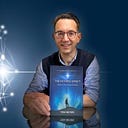The Autonomic Lesion — A New Paradigm in Manual Therapy?!
In today’s fast-changing world, the nature of health challenges has shifted significantly from the 20th-century paradigm. Previously, health issues predominantly stemmed from external physical forces, leading to somatic dysfunction. However, in the 21st century, a crucial transformation has occurred. The prevailing dis-ease patterns are now rooted in internal stress-related alterations, specifically autonomic dysfunction, marking a fundamental distinction. Traditional treatment approaches, designed to address functional and structural changes resulting from somatic dysfunction triggered by external factors, fall short in tackling the intricate multimodal health issues stemming from autonomic dysfunction associated with adaptive and psychosocial stress. In other words, a “treatment” revolution is needed to address the shift from external to internal dis-ease patterns. Within this shifting landscape, The Reaset Approach emerges as a therapeutic methodology and treatment modality in response to the changing needs, directing its focus to the autonomic lesion — an internal alteration that lies at the core of contemporary physical and mental health challenges, without losing sight of the fact that a patient may still present with a predominantly somatic dysfunction.
In the realm of manual therapy, the usual treatment approach puts emphasis on altered structural or functional patterns triggered by external forces. Manual therapists’ treatment of these altered physical patterns is mainly based on a form of manipulation to restore balance.
The Reaset Approach brings about a paradigm shift in response to the constantly evolving nature of today’s health challenges. Instead of solely attributing issues to external forces, the author has introduced the term “autonomic lesion” to emphasise the role of the autonomic nervous system (ANS) in the changing health landscape. The autonomic lesion, evolving into an autonomic dysfunction, has emerged as the primary contributor to contemporary, often multimodal health problems. These issues extend beyond mere physical health and wellbeing, impacting behaviour, cognition, emotions, time perception, and social interaction.
The deliberate focus on the autonomic balance in The Reaset Approach, and thus on resolving the autonomic lesion and consequent autonomic dysfunction, is gaining significance in today’s fast-changing and challenging world.
The author points out that the stress response has itself become a stressor because of a conflict between our slow-evolving biological evolution and the exponential speed at which our culture (environment) is changing. The rapid pace of modern life has surpassed our biological capacity to adapt. The conflict that arises translates itself into the “autonomic lesion” and develops into a specific kind of autonomic dysfunction: stress-related dysautonomia (S-RD).
It is this stress-related dysautonomia that has become the main direct and indirect cause of a wide range of physical and mental health problems (psychosomatic dysfunctions) in the 21st century, in contrast to the external physical forces leading to somatic dysfunction of the 20th century. The success of a treatment is interdependent on the treatment of the S-RD, i.e. the “reaset” (return to ease) of the autonomic dysfunction and lifting of the autonomic lesion.
With a primary objective of “reasetting the ANS first and maintaining it during treatment”, The Reaset Approach addresses the paradigm shift that 21st-century healing methods need and initiates the revolution in the evolution of manual therapy for improved patient outcomes.
In today’s fast-changing world, where adaptive and psychosocial stress has become central to dis-ease patterns, reasetting the ANS has become essential and key to helping patients cope with the challenges of modern life and thus preventing dis-ease from settling in. Where dis-ease has already set in, reasetting the ANS should be included in the treatment modality as a pre-treatment before addressing the patient’s symptoms.
Rooted in the principles of pioneers like Dr A.T. Still and Dr R. Virchow, The Reaset Approach has emerged through a journey of continuous exploration over 16 years, after the author’s patients reported that his way of working was different from that of his colleagues and other more conventional manual therapy methods. This echo still resounds today in new patients who find their way to him and his students.
The author, founder and practitioner of The Reaset Approach, Tom Meyers, is now presenting workshops internationally to share this therapeutic methodology and treatment modality, taking it beyond his own treatment room and out into the world. He also has committed himself to helping reshape educational curricula worldwide to include the importance of initiating autonomic balance in today’s changing aetiology of disease patterns.
“Taking yourself and your skills into the 21st century” and “initiating a revolution in the evolution of manual therapy” are not merely slogans for the author but an ongoing message and narrative, inviting all to join in an exploration of the changes needed to meet today’s health and wellbeing challenges and those emerging in the future.
Discover more about The Reaset Approach at www.thereasetapproach.com
References:
Hallman, D. M., & Lyskov, E. (2012). Autonomic regulation, physical activity and perceived stress in subjects with musculoskeletal pain: 24-hour ambulatory monitoring. International journal of psychophysiology : official journal of the International Organization of Psychophysiology, 86(3), 276–282. https://doi.org/10.1016/j.ijpsycho.2012.09.017
Liem, T. (2016). A.T. Still’s Osteopathic Lesion Theory and Evidence-Based Models Supporting the Emerged Concept of Somatic Dysfunction. The Journal of the American Osteopathic Association, 116(10), 654–661. https://doi.org/10.7556/jaoa.2016.129
Liem, T., van den Heede, P., et al. (2017). Foundations of Morphodynamics in osteopathy. An integrative approach to cranium nervous system, and emotions. Handspring Publishing.
Meyers, T. (2019). The effect of the “Reaset Approach” on the autonomic nervous system, neck-shoulder pain, state-trait anxiety and perceived stress in office workers: A randomised controlled trial. MSc. Thesis. Dresden International University (DIU) and Osteopathy Schüle Deutschland (OSD). https://bit.ly/47r8juO
Waitzkin, H. (2006). One and a Half Centuries of Forgetting and Rediscovering: Virchow’s Lasting Contributions to Social Medicine. Classics in Social Medicine. https://www.medicinasocial.info/index.php/socialmedicine/article/view/6/7
